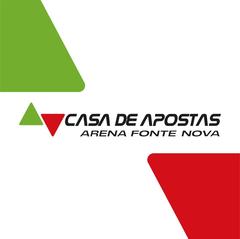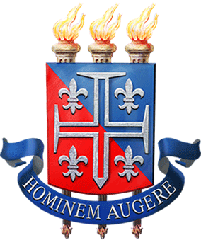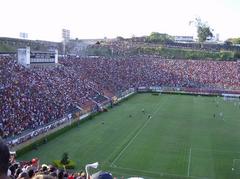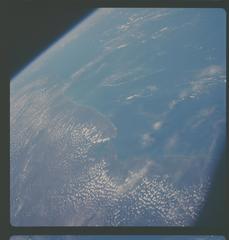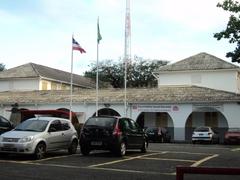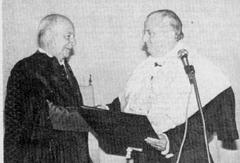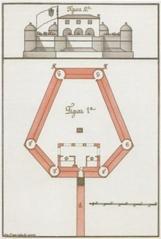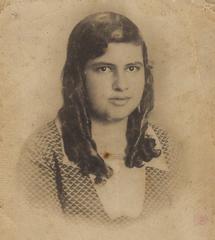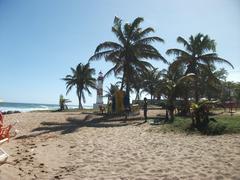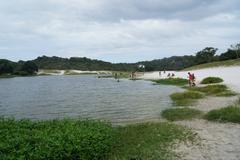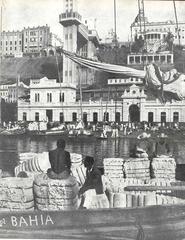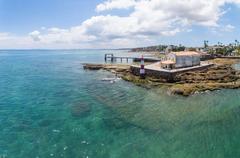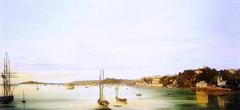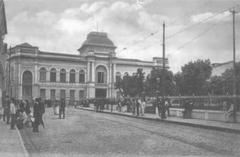Cruzeiro de São Francisco: Visiting Hours, Tickets, and Salvador Historical Sites Guide
Date: 14/06/2025
Introduction
Located in Salvador’s iconic Pelourinho district, the Cruzeiro de São Francisco—alongside the Igreja e Convento de São Francisco—stands as a masterpiece of Baroque architecture and a vibrant symbol of Brazil’s colonial, religious, and Afro-Brazilian heritage. The complex, constructed between the late 17th and early 18th centuries, is renowned for its ornate gold-leafed interiors, intricate Portuguese azulejos (ceramic tiles), and the monumental marble cross (cruzeiro) that marks its heart. This guide offers comprehensive information on the site’s history, artistic features, cultural significance, practical visiting details, and ways to fully experience one of Latin America’s most celebrated historical landmarks (Wikipedia, Salvador da Bahia Tourism, Travel Noire).
Table of Contents
- Historical Overview
- Architectural and Artistic Highlights
- Cultural and Religious Importance
- Preservation and Restoration
- Visiting Information: Hours, Tickets, Accessibility
- Visitor Experience and Practical Tips
- Nearby Attractions
- Frequently Asked Questions (FAQ)
- Conclusion & Final Tips
- References
Historical Overview
Situated at Largo do Cruzeiro de São Francisco, the church and convent were commissioned by the Franciscan Order in the late 1600s, reflecting Salvador’s status as a colonial capital and religious center. The site was funded by local elites and became a hub of religious, social, and charitable activity during a period marked by both economic prosperity and the transatlantic slave trade (Wikipedia). The marble cruzeiro in the square, installed in 1807, is a classic feature of Franciscan architecture, symbolizing the order’s enduring presence in Salvador (Viajento).
Architectural and Artistic Highlights
Structure and Layout
The complex is organized around the cruzeiro and features a church, convent, and cloister. The church’s Latin cross floor plan and austere sandstone façade contrast with the opulent Baroque interior (Salvador da Bahia Tourism).
Interior Features
- Gilded Woodwork (Talha Dourada): Nearly every surface is covered in intricate gold-leafed carvings, with motifs including foliage, cherubs, and religious symbolism.
- Altars & Sculptures: The high altar features Saint Francis of Assisi, surrounded by polychrome statues of major saints.
- Azulejos: The cloister and nave are lined with over 55,000 blue-and-white Portuguese tiles depicting biblical scenes, virtues, and allegorical motifs (Viajento).
- Ceiling Paintings: Trompe-l’oeil paintings illustrate the life of Saint Francis and blend European and Bahian artistic traditions.
- Marble & Jacaranda Wood: The church’s floor features geometric patterns in colored marble, while the sacristy’s furniture is carved from jacaranda wood.
The Cruzeiro Monument
The marble cross, standing 8 meters tall, is both a religious symbol and a prominent urban marker at the entrance to the complex. Its inscriptions detail the history and significance of the Franciscan Order in Salvador (Viajento).
Cultural and Religious Importance
Religious Life and Festivals
The site remains an active center for Catholic worship and community events, hosting major festivals like Santo Antônio (June 13) and São Francisco (October 4). These draw both Catholic and Candomblé practitioners, reflecting Salvador’s unique blend of Catholicism and African spiritual traditions (Wikipedia).
Afro-Brazilian Heritage
Salvador is a hub of Afro-Brazilian culture, with Pelourinho serving as a stage for music, dance, and ritual. Around the cruzeiro, visitors will encounter performances of samba, capoeira, and religious ceremonies blending Catholic and Candomblé practices (TravelPulse, Travel Noire). Local artisans and baianas (women selling acarajé) contribute to the site’s living heritage (visitbrasil.com).
Preservation and Restoration
Heritage Status
The complex is a listed national heritage site (IPHAN) and part of Salvador’s UNESCO World Heritage Historic Center. It is also recognized among the “Seven Wonders of Portuguese Origin in the World” (Wikipedia).
Recent Challenges
Tropical weather, pollution, and heavy visitor traffic have caused deterioration of tiles, gilded woodwork, and structural elements. Emergency repairs have been ongoing, with major tile restoration projects completed between 2020 and 2023. A partial roof collapse in February 2025 led to injuries and highlighted the need for ongoing maintenance (Pelourinho Dia e Noite).
Community and Sustainability
While the Franciscan order prioritizes social outreach, the site relies on government and tourist support for preservation. Responsible tourism and donations are crucial to sustaining restoration efforts (Wikipedia).
Visiting Information: Hours, Tickets, Accessibility
Hours
- Church and Convent: Generally open Monday–Saturday 9:00–17:00; Sundays and holidays 10:00–16:00. Restoration or events may affect access—check official sources before visiting (Official Website).
- Cruzeiro Monument: The square is open to the public at all times.
Tickets
- Admission: As of mid-2025, tickets are approximately 20 BRL for adults, with discounts for students, seniors, and children. Tickets are available onsite or online (Official Website).
- Guided Tours: Available in Portuguese, with limited English/Spanish options. Booking in advance is recommended.
Accessibility
The square is level and accessible. Some areas inside the complex have steps and uneven floors; visitors with mobility challenges should inquire ahead for assistance.
Visitor Experience and Practical Tips
- Dress Code: Modest attire is required; shoulders and knees should be covered.
- Photography: Allowed in most areas without flash or tripods. Always ask before photographing people, especially performers or baianas.
- Best Times: Early mornings or late afternoons on weekdays offer the most serene experience.
- Facilities: Restrooms and information desks are onsite. Numerous cafés and shops are nearby in Pelourinho.
- Safety: The area is generally safe during the day; exercise standard city precautions, particularly at night.
Nearby Attractions
- Pelourinho: Salvador’s historic quarter, celebrated for colonial architecture, music, and vibrant street life.
- Cathedral Basilica of Salvador: An architectural and historical landmark nearby.
- Elevador Lacerda: Offers panoramic city views.
- Mercado Modelo: A bustling market for crafts and local foods.
Frequently Asked Questions (FAQ)
Q: What are the visiting hours for the Church and Convent?
A: Monday–Saturday 9:00–17:00; Sundays and holidays 10:00–16:00. Check for updates before visiting.
Q: Is a ticket required to visit the cruzeiro?
A: The cruzeiro in the square is free to visit; tickets are required to enter the church and convent.
Q: Are guided tours available?
A: Yes, in Portuguese and occasionally English/Spanish; book ahead for availability.
Q: Is the site wheelchair accessible?
A: The square is accessible; interiors may have limited access—contact in advance for details.
Q: Can I take photos?
A: Yes, but avoid flash/tripods and always seek permission before photographing people.
Conclusion & Final Tips
The Cruzeiro de São Francisco and its adjoining complex represent a unique convergence of art, faith, and Afro-Brazilian culture. Visitors are rewarded with a journey through Brazil’s colonial past and present-day traditions—whether marveling at baroque interiors, witnessing capoeira in the square, or sampling local cuisine. To make the most of your visit, plan ahead: check current hours, purchase tickets online, and consider joining a guided tour for deeper insight. Supporting local artisans and preservation funds helps safeguard this treasure for future generations. For the latest updates, download the Audiala app or consult official Salvador tourism resources (Official Website).
References and Further Reading
- Wikipedia
- Viajento
- Salvador da Bahia Tourism
- Visit Brasil
- Pelourinho Dia e Noite
- Official Website
- TravelPulse
- Travel Noire
